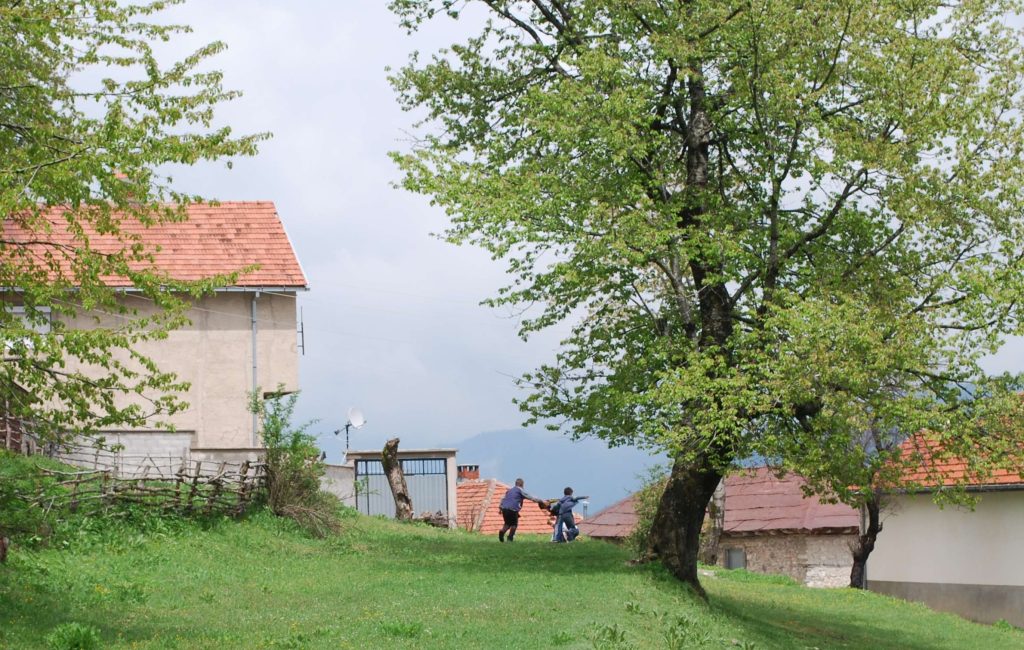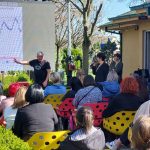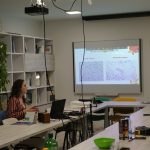
As part of the Northern Forests Initiative: “Forest Restoration in Albania and North Macedonia,” a research was conducted on the socio-economic situation in the Bukovik region.
E.C.O, with the support of local experts from the Faculty of Forest Sciences, is conducting a ROAM assessment for the Bukovikj Mountain based on desk analysis and field data collection to identify suitable FLR options and priority sites for FLR restoration. The assessment is conducted in collaboration with national and local stakeholders. Our role is also to support FLR implementation work and capacity building activities in the restoration area.
The Bukovik region comprises 19 villages, with a total population of 2,556 residents. The total area amounts to 14,504 hectares, with 776 hectares designated for afforestation. These lands are owned by the state and managed by the Public Enterprise National Forests – Gostivar and Kicevo.
Interviews were conducted in 12 out of the 19 villages, using a proximity method to the afforestation area. These include Sretkovo, Padalishte, Papradishte, Berikovo, Jagol, Bukojchani, Midinci, Kolari, Tajmishte, Gorna Gjonovica, Dolna Gjonovica, and Srbinovo.
The population in this region is predominantly male, with 75.3% being males and 24.7% females. The youngest resident is 24 years old, while the oldest is 81 years old, with an average age of 51.5 years.
There are no students, 54.7% are employed, 17.5% are unemployed, and 17.5% are retirees.
Regarding the education of the population, 11.7% have elementary education or less, 49.4% have secondary education, 2.4% have some education between secondary and higher education, 30.6% have higher education, while 5.8% have post-graduate education.
57.6% of the people living there were born there, 14.1% have lived there for more than 30 years, 5.8% have lived there between 16 and 30 years, 3.5% have lived there between 6 and 15 years, and 18.8% of the residents have lived in the area for less than 5 years.
The smallest household has only one resident, the largest has 13 residents, and the average household has five members.
68.2% of the land in the Bukovik region is agricultural, 22.4% of the land is under concession, and 16.5% of the land is used for agricultural activities. 19% reported problems with land inaccessibility.
In the region, there are 497 cows, 3,432 sheep, and no goats. There are 82 apiaries, with only 16 in Kolari.
27% of the land is privately owned, with only 12 owners possessing 52% of the forests.

None of the surveyed residents reported earning from logging and selling wood or other forest products.
Among the identified problems for land accessibility, residents cite terrain overgrowth, unresolved property rights on parcels, cadastral issues, and infrastructure barriers.
Of those surveyed, 95% reported being aware of the benefits of the forest. They use the forest for several purposes, including hiking, short nature walks for clean air, collecting other forest products such as mushrooms, chestnuts, herbs, raspberries, blackberries, rosehips, walnuts, firewood, and other forms of recreation.
Forests are considered highly important by 99% of the surveyed residents of Bukovik. However, 96% perceive that the forest territory is decreasing.
Macedonka Stojanovska proposes addressing land ownership issues by increasing awareness of land tenure rights through targeted awareness campaigns and capacity building initiatives.
Encouraging sustainable forest management practices among private forest owners through training, technical support, and financial incentives.
Supporting alternative livelihood options such as beekeeping and the collection of non-timber forest products to diversify income sources and reduce dependence on forest resources.




